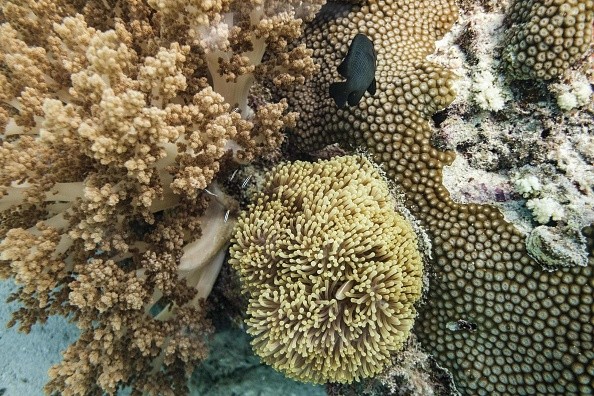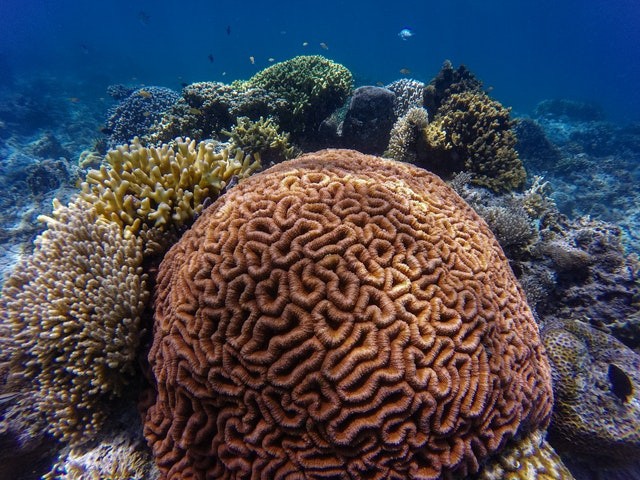Researchers at the University of Wisconsin-Madison have discovered a correlation between ocean acidification and the deterioration of coral skeleton.
Coral reefs, which cover less than 1% of the ocean floor, are home to some of the planet's most diverse ecosystems, with an estimated one million species living there.
It has been established that coral species making up these reefs are vulnerable or resistant to ocean acidification (the result of rising CO2 levels in the atmosphere). But researchers don't know why.

Impacts of Climate Change on Coral Reef and Skeletons
Researchers found that the rate at which coral skeletons crystallize varies among species and is linked to their ability to withstand acidification.
Coral reefs and skeletons are particularly vulnerable to climate change, therefore it's critical to identify the extent of the problem and develop scientifically sound solutions.
According to Science Daily, "Many agencies keep putting out reports in which they say, 'Yes, coral reefs are threatened,' with no idea what to do," says Pupa Gilbert, a physics professor at the University of Wisconsin-Madison and the study's senior author.
Sea creatures called reef-forming corals build skeletons out of aragonite, an almost entirely insoluble crystalline substance. Prior to crystallization, calcium carbonate, which is more dispersed, occurs as predecessors to aragonite on the skeleton.
Three coral genera were examined by the researchers, and their skeletons were analyzed in great detail for the first time. They used a technique pioneered by Gilbert called PEEM spectromicroscopy, which is the most sensitive method to date for detecting the various types of calcium carbonate.
How Coral Crystallization Affects Coral Sensitivity
A thicker amorphous calcium carbonate band was detected in Acropora, a species more sensitive to acidification than Stylophora in these spectromicroscopy photos, which were used to compare the thickness of amorphous precursors to crystals.
Turbinaria, a third unidentified genus with a thinner amorphous precursor layer than Stylophora, appeared to be the most resistant to ocean acidification of the three that were studied. The crystallization process is slowed down by the presence of a wide band of uncrystallized minerals, as per Fuenitech.
A coral species is more resistant to ocean acidification if it crystallizes swiftly on the skeleton's surface, where the living animal deposits the amorphous calcium carbonate, than if it crystallizes slowly, says Gilbert.

Interpreting the PEEM Images
It's possible that the mechanism is straightforward, but the data processing necessary to handle and understand the PEEM images is anything but complex. It's necessary to examine millions of data points for each pixel in imaging data. There are a lot of decision points and a lot of computational power involved in processing the data.
Automation and machine learning have been attempted by the team, however such approaches have failed. Gilbert, on the other hand, has discovered that people are the best data processors.
Gilbert was wary of drawing generalizations based on the actions of a small group of people. Consequently, she enlisted the help of some undergrads from the University of Wisconsin-Mercile Madison's J. Lee Scholars Program, which aims to recruit and retain brilliant students from underrepresented groups. As a result of this team, they had access to a wide range of decision-makers.
They were referred to as the Cnidarians, a phylum that includes corals, anemonoids, and jellyfish. They quickly became integral members of the team. Gilbert assigned the same dataset to various students to process in parallel and discuss at their next Zoom conference, which they did numerous times a week.
According to Gilbert, a robust and dependable analysis is one in which several persons come up with precisely the same solution while making different selections. Thirteen Cnidarians contributed to this study since their contributions were so valuable.
For more news, updates about coral reef and similar topics don't forget to follow Nature World News!
© 2026 NatureWorldNews.com All rights reserved. Do not reproduce without permission.





